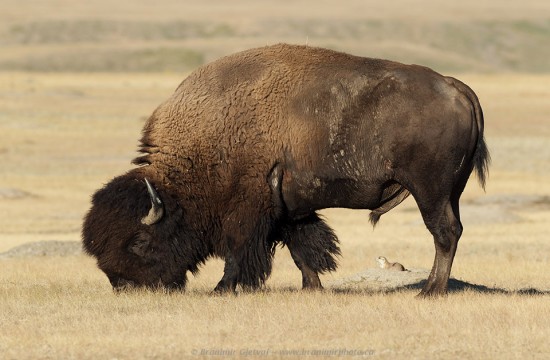A full moon occurs every 29.5 days. Since every month except February has at least 30 days, there is a possibility for 2 full moons to occur in one month if the first is close to the beginning of the month. If there are two full moons within a month, people often refer to this phenomenon as a ‘blue moon’. The name ‘blue moon’ first appeared in the article “Once in a Blue Moon” by James Hugh Pruett published in Sky and Telescope magazine in 1946. He simplified a definition that appeared in a 1937 Maine Farmer’s Almanac. He wrote “Seven times in 19 years there were and still are 13 full moons in a year. This gives 11 months with one full moon each and one with two. This second in a month, so I interpret it, was called Blue Moon.” The term ‘blue moon’ also refers to the third full moon in a season that has four full moons, instead of the usual three.
This September we had two full moons rising in one month. I happened to be in Grasslands National Park over the Labour Day long weekend and tried to photograph the full moon rising (or setting) over a stark prairie landscape. Unfortunateluy, the weather was not cooperative – dense storm clouds obscured the moon at the time when available sunlight still illuminated foreground, to allow for balanced capture of bright moon and subjects on the landscape. Clouds cleared out one day after the perfect date I was aiming for. Not a big problem, I just will not be able to use a long lens to get a big moon with brightly lit foreground (it is going to be too dark by the time the moon rises, or too bright by the time it sets in the morning).
There is a small group of male bison that often hang out along to the Ecotour Road near the north entrance to the West Block of Grasslands National Park. I was lucky enough that a few animals crossed the road and started grazing between my car (which I used as a mobile blind) and the setting moon. I managed to take few shots before the surrounding became too bright and the moon faded behind a thin veil of clouds.
The bison did not move too fast and I was able to position myself to capture a few interesting images. Here are two from this set. I like the first one as it has an interesting composition with repeating elements. I even managed not get the bison heads visually touching or overlaping.
For the second image I positioned my moblie blind so I can get a Black-tailed prairie dog framed by the large body of a male bison. I was quite happy to be able to photograph these two species that are found together only in this part of the Canadian prairies.



